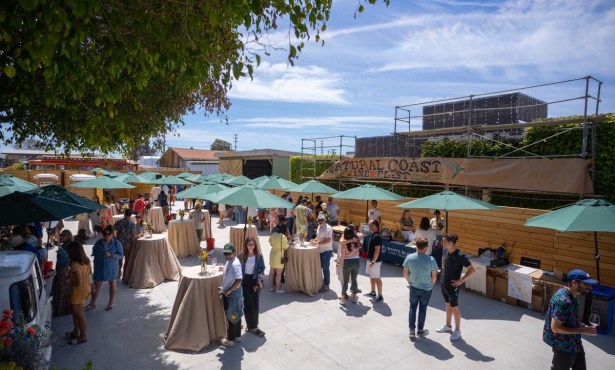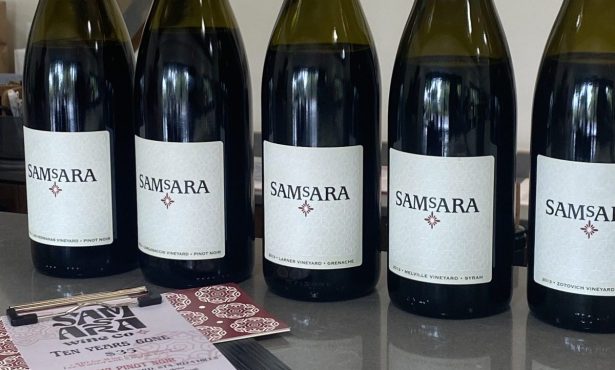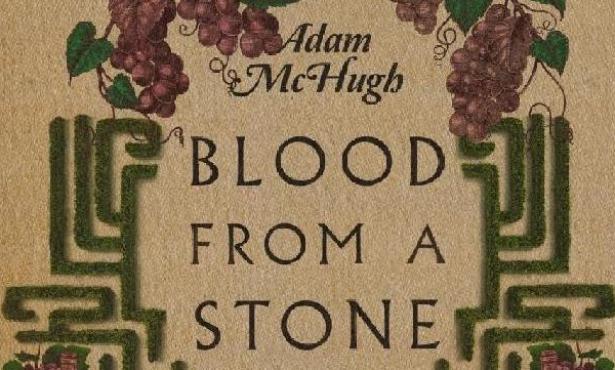Slow and Steady
After Rick Longoria received his degree in sociology from UC
Berkeley back in the early 1970s, he decided that he’d either
become a winemaker or a lawyer. If he was going to become a lawyer,
he’d have to hunker down and go to law school. If he was going to
become a winemaker, he decided, he’d probably have to go to UC
Davis. Longoria had developed an appreciation for wine during
weekend trips away from the college dorm, during which time he and
his friends would take wine-tasting tours through Northern
California.
Somewhere between deciding on one path or another, a young
Longoria took one year off to travel through South America. Back
then, Longoria says now, he was a “bit of a radical. I was very
involved in the student movement of the late 1960s and early
1970s.” Longoria chose to visit South America, rather than Europe,
because he was deeply concerned about how Americans were being
perceived in these nations, considering America’s ongoing
involvement in South American politics at that time. Though
Longoria planned to travel widely through South America, he never
got past Ecuador, where he fell in love with the people and the
scenery of the land there. It was while he lived in South America
that Longoria decided his heart was not in law school, nor in
attending UC Davis. Instead, upon his return stateside, he wrote to
a number of wineries in Sonoma and Napa, asking if he could find
employment among their ranks, despite his complete lack of
experience.
The only winery that showed interest in his passion for wine was
Buena Vista in Sonoma, where he began working in 1974. Longoria
quickly moved up through the ranks, and was soon promoted to a
full-time cellar worker. During the next few years, Longoria held
posts as winemaker or Cellar Master at a number of wineries,
including Rancho Sisquoc, Chappellet Winery, and Firestone
Vineyard, where he met his future wife, Diana, who was,
coincidentally, the first tour guide there. Though Longoria
established Richard Longoria Wines in 1982, it was not until
leaving noteworthy appointments at J. Carey Cellars, Gainey
Vineyards, and Rideau Vineyard, where he helped launch the Rideau
Vineyard brand, that Longoria was able to dedicate himself
full-time to his first love — the production of his own handcrafted
wines, with an emphasis on producing an unforgettable pinot noir.
By then, it was 1997. Flash forward nearly 10 years, and Longoria
is not only producing award-winning wines, which often fetch high
points from leading wine critics, he has somehow, through it all,
managed to sustain a pure love for winemaking. While many of
Longoria’s winemaking colleagues spend much of their time on the
road, peddling their wines, Longoria stays close to home, where,
with the help of assistant winemaker Lorna Kreutz, he remains a
truly hands-on winemaker. The term “hands-on” is widely misused
these days by any number of “craftsmen” in any number of
specialized fields. In truth, many of them have passed the actual
crafting of, say wines, for example, to cellar workers, while
they’re out schmoozing with celebrity chefs and wine writers. As a
result, the quality of the wines often suffers, and as quantities
increase, often to sustain the winemaker’s increasingly glamorous
lifestyle, the wines lose their focus and become of secondary
import to the increasingly star-struck winemaker. This is not the
case with Rick Longoria. He is so obsessed with creating wines that
are true to their varietal origins that he can often be found at
his small winery in the warehouse district of Lompoc. Though he’s
not polished in the areas of public relations, and is not written
about as much as he should be, his wines still garner the
recognition that they deserve by receiving high scores and mention
in articles about definitive Santa Barbara pinot noirs and
chardonnays. This is all due, in no small part, to the fact that,
despite Longoria’s almost hermit-like existence in his cellar, the
wines speak for themselves. And what great examples of focused and
thoughtful winemaking they are. Though Longoria was the first
winemaker to “set up shop” in a warehouse in Lompoc, the unassuming
visionary laid the groundwork for others to make their wines there,
as well. Now known as the Lompoc Ghetto, where fashionable,
hard-to-find wines such as Brewer-Clifton, Bonaccorsi, and Holus
Bolus are made, Longoria still holds the largest winery space there
and is greatly admired by younger winemakers, who now find
themselves in the same neighborhood.
Wine communities are often built on the backs of hardworking and
dedicated winemakers such as Longoria. They may not be the
trendiest, hippest guys around, but their belief in their
winegrowing region of choice and their own deeply held passions are
what lend a winegrowing region its authenticity. Though they are
often the unsung heroes of an increasingly self-conscious industry,
without them, we would witness the complete commodification of
wine, and the Disneyland-ification of Santa Barbara County wine
country. To learn more about Richard Longoria wines and his tasting
room, located in Los Olivos, visit longoriawine.com.



